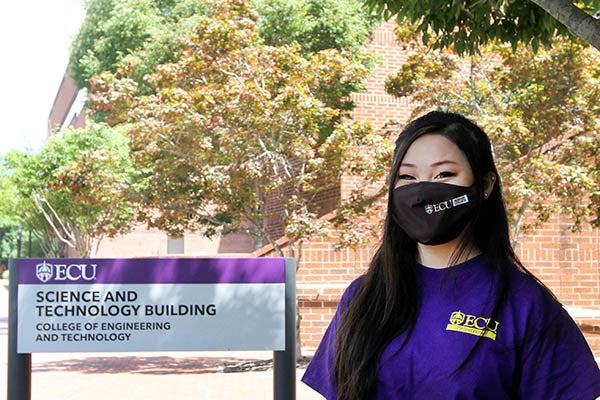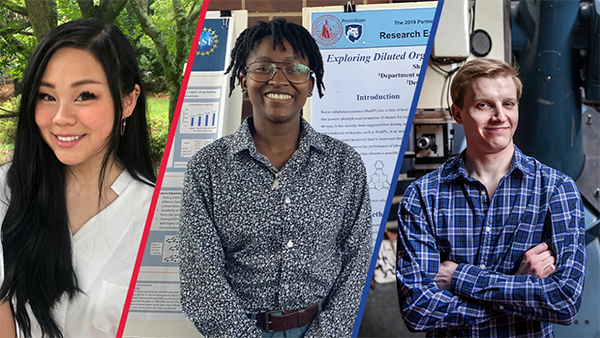Sessoms receives NC Space Grant scholarship
When people hear NASA, their first thought might be of space or astronauts. However, NASA’s mission directorates cover a range of fields that include aeronautics research, human exploration and operations, science and space technology.
To support NASA’s missions and build a diverse STEM workforce, the North Carolina Space Grant creates opportunities for students, educators and the public to conduct research and become involved in STEM. One of these opportunities is the annual North Carolina Space Grant Undergraduate Research Scholarship. This year, East Carolina University’s Olivia Sessoms, a senior Honors College student majoring in engineering with an environmental concentration, was selected as one of 14 undergraduate scholarship recipients from across the state.

Olivia Sessoms was ECU’s only recipient of a NC Space Grant scholarship for the 2020-21 academic year. Sessoms will conduct her research on ECU’s campus this fall, where she practices social distancing and mask wearing measures to prevent the spread of COVID-19. (Photo by Ken Buday)
“After learning about the amazing opportunities offered through the NC Space Grant — including competitions, scholarships and NASA internships — I decided to apply,” Sessoms said. “I was especially enthusiastic as I plan to attend graduate school; so this grant not only provides me the opportunity to fund my research, but also the ability to collaborate with NASA centers, facilities, industry partners and mentorship networks, making me a more competitive graduate school candidate.”
The merit scholarships provide $8,000 per student for faculty-supervised research over a 12-month period. Scholarships are awarded to students who are pursuing a bachelor’s degree in a science, engineering, technology or mathematics discipline and do not have to have an aerospace or aviation concentration.
“Though one day it would be interesting to go to space, as an environmental/civil engineering student, I plan to work more on and within the surface of the Earth. After pursuing a research-based master’s degree, I plan to work in industry at an engineering consulting firm. My interests are at the intersection of mechanics, design, and environmental science/sustainability,” Sessoms said.
Her research involves computational modeling of nitrogen species transport in unsaturated soils using specialized software. According to EPA-supported research, nitrogen pollution has a negative impact on human health and environmental quality.
“Developing a robust model of nitrogen species transport in variably saturated soil would allow for the extrapolation of results to different sites and would save money and time by decreasing reliance on a large amount of experimental measurements,” she said. “One of the greatest benefits of this model is once the framework is created, parameters can be easily changed so the model fits different scenarios.”

Sessoms, left, is one of 31 graduate and undergraduate students to receive NC Space Grant funding this year. (Photo courtesy of NC Space Grant)
Dr. Ali Vahdati, Sessoms’ research advisor, encouraged her to attend an informational meeting about the scholarship hosted at ECU. She has been working in Vahdati’s lab, and he expects her research to contribute to a project he has with Dr. Randall Etheridge in the Department of Engineering on managing contamination caused by waterfowl in Lake Mattamuskeet.
Sessoms said she still has a lot to learn about her own research project and ways to become a better researcher. She plans to finish developing her model, running predictive simulations and writing a journal manuscript about the results. She will also present preliminary results at the fall State of North Carolina Undergraduate Research and Creativity Symposium and more developed results at the spring 2021 NC Space Symposium.
Sessoms encouraged other undergraduate students to apply and said she can answer questions about the process.
“I would recommend that students attend any informational meetings the NC Space Grant holds and work with your research advisor when writing your grant proposal,” Sessoms said. “There are many faculty members on campus who might be on the committee to review applications, or at least have experience writing grant proposals, so having outside input on the structure of your proposal is extremely helpful.”